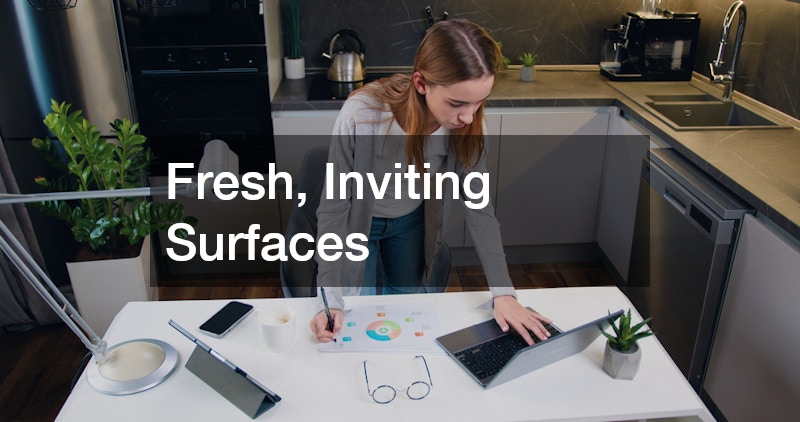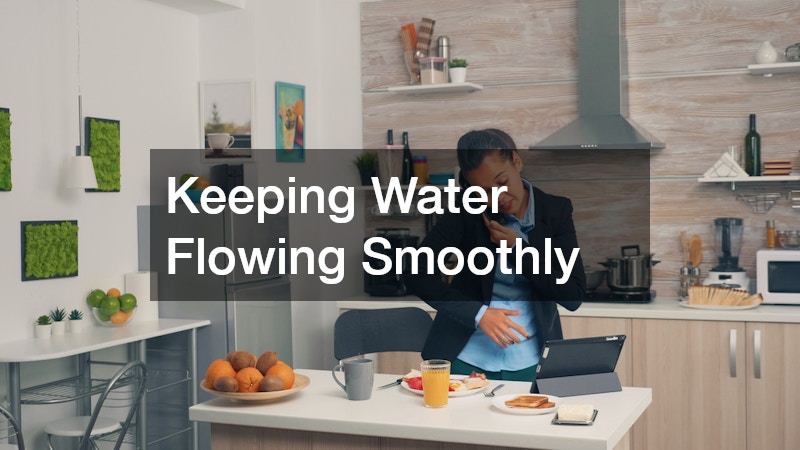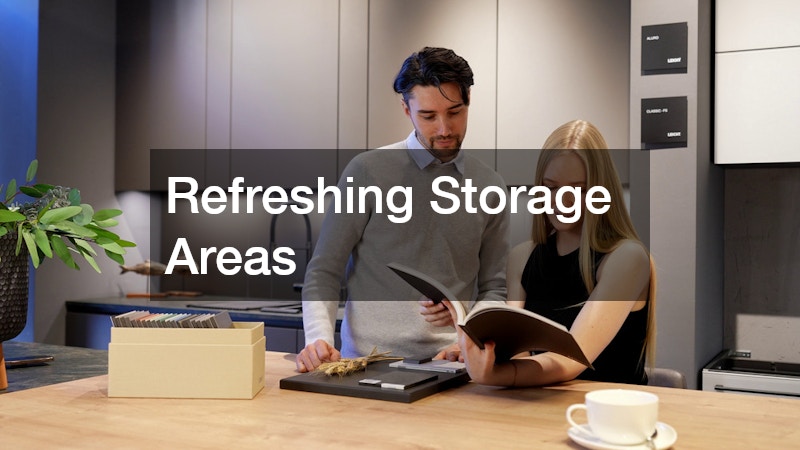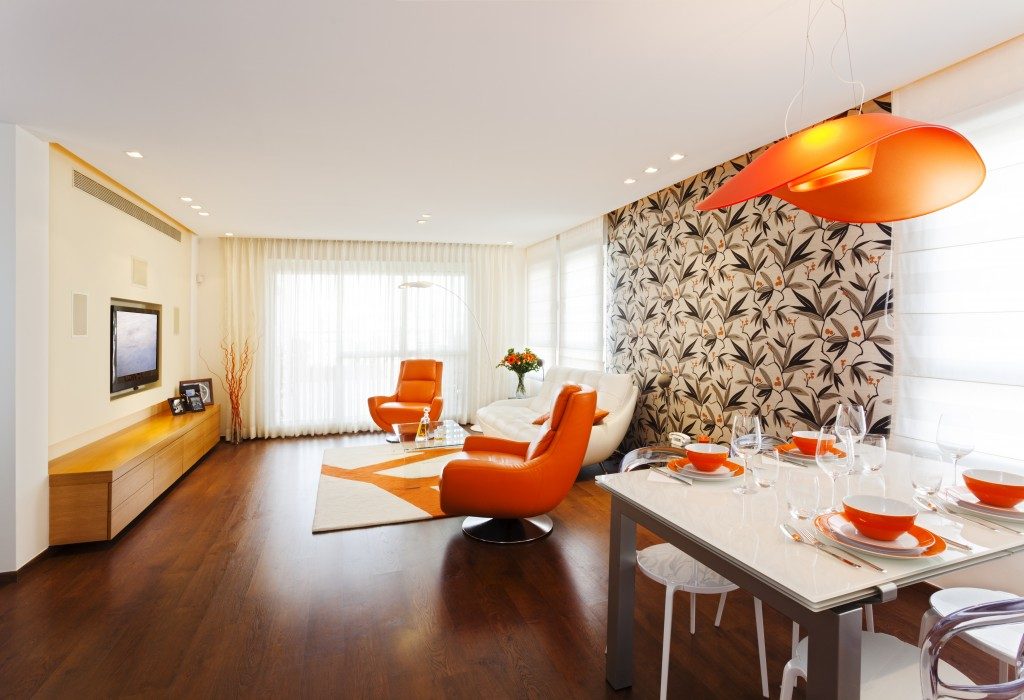The atmosphere of a workplace significantly influences how employees feel, how they collaborate, and even how productive they are. While many companies focus on open floor plans, ergonomic desks, or team perks, one often-overlooked space has a tremendous impact on morale: the work kitchen. It is more than a place to grab coffee or heat up a lunch; it serves as a hub for social interactions, casual brainstorming, and informal team bonding. Employees who have access to a well-maintained, thoughtfully designed kitchen are more likely to take breaks, recharge, and return to their tasks with renewed focus.
The psychology of the environment is well-documented. Bright, clean, and organized spaces reduce stress, improve focus, and make employees feel valued. Conversely, cramped, outdated, or unhygienic kitchens can be a source of frustration, subtly eroding morale over time. A kitchen that combines functionality, aesthetics, and comfort can transform ordinary break times into moments of connection and rejuvenation.
Fresh, Inviting Surfaces
First impressions matter, and nothing defines the look and feel of a work kitchen more than its walls and cabinets. Engaging a professional painting company to refresh the space is a surprisingly impactful investment. Walls that are chipped, faded, or stained can make even a clean kitchen feel neglected, whereas freshly painted walls convey care and attention to detail.
Color choices play a subtle but important role in mood. Soft blues and greens create a calming environment, ideal for short breaks when employees need to decompress. Warmer tones like yellows and oranges stimulate energy and creativity, making them suitable for kitchens adjacent to collaborative spaces. Painting cabinets, in addition to walls, can create a cohesive aesthetic and visually elevate the room without requiring a full remodel.
Beyond aesthetics, painting can help protect surfaces from daily wear and tear. Using low-VOC or eco-friendly paints ensures that indoor air quality remains safe for employees, especially in spaces where food is handled. A kitchen with a fresh, vibrant appearance subtly encourages staff to take pride in their environment, making breaks feel more like a reward than a routine task.
Employees naturally gravitate toward inviting spaces. By updating surfaces with fresh paint, employers create a kitchen that draws people in, promotes informal conversation, and provides a mental reset from their daily work. Even small surface improvements can transform a tired kitchen into a morale-boosting feature of the office.
Upgrading Prep Areas
Countertops are both functional and symbolic in a work kitchen. Old, worn surfaces can make the space feel neglected, while new, well-chosen materials signal care and professionalism. Hiring expert countertop services allows organizations to install durable, easy-to-clean surfaces that stand up to daily use. Quartz, granite, and high-quality laminates are popular options, each offering different benefits. Quartz is nearly maintenance-free and resists stains, granite offers timeless elegance, and laminate provides an affordable yet attractive alternative.
Layout matters as much as material. Organizing the kitchen into zones for coffee preparation, meal prep, and snacks prevents clutter and reduces friction between employees sharing the space. Even small changes, such as adding a wider counter by a communal table or a designated area for microwaves and coffee machines, can improve workflow and make the kitchen more enjoyable to use.
The tactile experience of a smooth, clean countertop contributes subtly to morale. Employees feel more inclined to prepare meals or bring in snacks when surfaces are reliable and pleasant to touch. Investing in quality countertops also reduces maintenance needs and prevents small frustrations, such as cracked surfaces or peeling laminates, which can make the kitchen feel chaotic.
Flooring That Lasts and Looks Good
The flooring in a work kitchen affects both safety and aesthetics, yet it is often overlooked. High-traffic kitchens require durable, easy-to-clean surfaces. Professional flooring installation ensures that the space is both practical and visually appealing. Options like slip-resistant vinyl, laminate wood alternatives, or epoxy coatings provide long-lasting durability and minimize the risk of accidents.
Beyond functionality, flooring sets the tone for the kitchen’s overall look. Coordinating colors and textures with walls and countertops creates a cohesive environment that feels intentional and cared for. Subtle patterns or textured surfaces can hide minor spills or scratches, maintaining a polished appearance over time.
Comfort and tactile experience also matter. Employees spend several minutes standing or moving in the kitchen; a floor that is safe, stable, and comfortable can make these moments more pleasant. When staff feel comfortable and safe, they are more likely to linger, interact, and enjoy their breaks. Upgraded flooring may seem like a minor detail, but it contributes significantly to the overall impression of a kitchen as a well-maintained, morale-boosting space.
Safe and Efficient Power
A well-lit, electrically accessible work kitchen enhances both comfort and productivity. Poor lighting and limited outlets can frustrate employees and reduce the space’s utility. Working with licensed electrical contractors allows offices to install additional outlets, USB ports, and under-cabinet lighting, ensuring convenience and safety.
Bright, energy-efficient LED lighting improves visibility for food preparation while creating a warm and welcoming atmosphere. Strategically placed outlets near coffee machines, microwaves, and snack stations reduce clutter from extension cords, which can pose safety hazards. Under-cabinet LED strips provide task lighting for prep areas while subtly enhancing the room’s aesthetic.
By combining proper lighting and thoughtful electrical placement, employees are more comfortable using the kitchen, whether for quick coffee breaks, preparing meals, or informal collaboration. Attention to these details makes the kitchen a functional, inviting space, reinforcing its role as a hub of employee interaction.
Greener Cooking Practices
Maintaining a hygienic work kitchen requires attention to how cooking by-products are handled. Proper cooking oil disposal is essential to prevent odors, surface residue, and plumbing issues. Setting up clearly labeled collection stations and communicating simple disposal instructions encourages employees to follow best practices.
A clean, environmentally responsible system signals that the company cares about both staff and sustainability. Employees feel pride in a kitchen that is tidy and organized, which enhances their willingness to use and respect the space. Over time, these small habits improve both hygiene and morale, as staff can enjoy a fresh, functional kitchen free from spills, stains, and unpleasant smells.
In addition to proper disposal, providing convenient tools such as designated funnels, drip trays, or sealable containers can make it easier for employees to handle used cooking oil correctly. Offering occasional reminders or visual guides near collection stations reinforces proper habits and ensures consistency across the team. When employees see that the system is both practical and respected, they are more likely to engage with it, keeping the kitchen clean and pleasant for everyone.
Comfortable Climate Control
Temperature and air circulation are critical to employee comfort in a work kitchen. Proper ventilation prevents lingering odors and keeps the space inviting throughout the year. Engaging professional HVAC services ensures that heating, cooling, and airflow are balanced, creating a comfortable environment regardless of weather conditions.
Consistent climate control makes breaks more enjoyable, allowing employees to relax and recharge. Air that is too hot or too stuffy can discourage staff from spending time in the kitchen, while a well-ventilated space encourages lingering and casual socialization. Maintaining optimal airflow and temperature in a kitchen enhances both comfort and morale, supporting informal interactions and promoting a sense of well-being.
Beyond professional installation, simple adjustments such as strategically placing fans, adding vent deflectors, or regularly cleaning HVAC filters can further improve air circulation and comfort in the work kitchen. Seasonal maintenance ensures that the system operates efficiently, preventing unexpected temperature fluctuations or stuffy conditions.
Keeping Water Flowing Smoothly
A functional work kitchen depends on reliable plumbing. Regular drain cleaning prevents clogs, unpleasant odors, and interruptions in sink use. Ensuring that garbage disposals and drains are clear reduces frustration and keeps the kitchen efficient.
Educating staff on simple practices, such as avoiding pouring grease or large food scraps down sinks, complements professional maintenance. A kitchen that consistently functions as expected reinforces a sense of order and reliability, encouraging employees to use the space for breaks, meal prep, and informal collaboration. A well-maintained kitchen becomes a predictable and enjoyable environment rather than a source of stress.
In addition to professional drain cleaning, incorporating small preventative measures—like installing strainers in sinks, labeling bins for food scraps, and scheduling periodic inspections—can further reduce the risk of blockages. Encouraging employees to rinse dishes promptly and avoid disposing of grease or fibrous materials down the drains helps maintain smooth operation.
Managing Grease Build-Up
Grease accumulation is a common challenge, particularly in busier kitchens. Professional grease trap pumping services help maintain hygiene, reduce odors, and prevent plumbing issues. Regular maintenance ensures that employees experience a clean, odor-free environment, contributing to both safety and morale.
Visible attention to cleanliness in a work kitchen sends a subtle message that the company values its employees’ comfort and health. Staff are more likely to enjoy spending time in the kitchen, which encourages social interaction and fosters a stronger sense of community. Regular upkeep transforms a functional space into one that employees look forward to using.
Beyond routine pumping, training staff on simple daily habits—such as wiping down surfaces after use, properly disposing of grease, and avoiding pouring fats down sinks—can significantly reduce buildup between professional cleanings. Combining consistent employee practices with scheduled grease trap pumping services ensures that the kitchen remains both hygienic and inviting. This proactive approach not only minimizes unpleasant odors but also reinforces a culture of shared responsibility, helping employees feel invested in maintaining a space that supports comfort, collaboration, and overall morale.
Improving Air Quality
Air quality has a direct effect on comfort, focus, and well-being in a work kitchen. Professional duct cleaning removes dust, allergens, and lingering food odors, creating a fresher environment. Clean, well-circulated air reduces distractions caused by unpleasant smells and enhances the overall experience of using the kitchen.
Maintaining filters and performing periodic inspections ensures that employees consistently enjoy a comfortable space. A kitchen with fresh air encourages informal gatherings, collaborative breaks, and a more pleasant atmosphere, directly boosting morale and satisfaction.
In addition to duct cleaning, incorporating small upgrades such as air purifiers, vent covers, or strategically placed fans can further enhance air circulation and remove lingering odors from cooking or snacks. Encouraging employees to keep vents unobstructed and to clean up spills promptly also helps maintain a healthier environment. Over time, these improvements not only make the kitchen more pleasant to use but also contribute to overall workplace wellness by reducing allergens and improving comfort, making it a space employees are more likely to enjoy and linger in.
Refreshing Storage Areas
Storage significantly impacts both functionality and appearance in a work kitchen. Professional cabinet painting revitalizes worn cabinetry, creating a polished, cohesive look. Clear organization reduces clutter, making it easier for employees to access utensils, dishes, and supplies efficiently.
Color-coding or labeling cabinets enhances usability and ensures that staff can find what they need quickly. A neat, attractive kitchen fosters pride and encourages employees to keep the space organized. When storage is easy to navigate, the kitchen becomes more inviting and efficient, further enhancing team satisfaction and engagement.
Beyond aesthetics and organization, thoughtfully designed storage can also improve workflow and reduce stress. Incorporating pull-out shelves, lazy Susans, or adjustable racks allows employees to reach items without struggling, making meal prep and cleanup faster and more enjoyable. Even small additions like dedicated compartments for reusable containers, coffee supplies, or communal snacks can prevent overcrowding and ensure that frequently used items are always within easy reach. By optimizing both accessibility and functionality, the kitchen becomes a space that feels intuitive and user-friendly, encouraging employees to engage with it more often and reinforcing a sense of shared responsibility for maintaining its upkeep.
A thoughtfully upgraded work kitchen does more than improve aesthetics; it transforms the space into a hub for morale, collaboration, and productivity. From fresh paint and new countertops to durable flooring, functional lighting, and improved air quality, every enhancement contributes to a more inviting environment. Maintenance practices, including drain cleaning, grease trap pumping, and proper cooking oil disposal, ensure the kitchen remains reliable and pleasant.
Investing in the kitchen demonstrates care for employees, encouraging them to take pride in the space, use it for social interaction, and feel more satisfied in their workday. Incremental improvements create cumulative benefits, turning the kitchen into a center of positivity, creativity, and team cohesion. Prioritizing both function and aesthetics in this central space fosters a healthier, happier, and more connected workplace.






